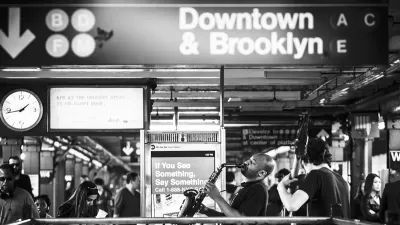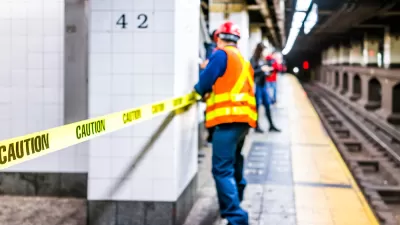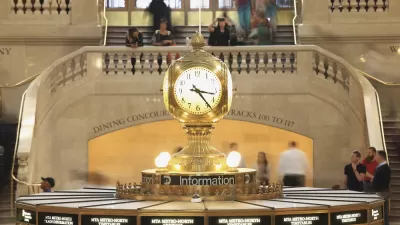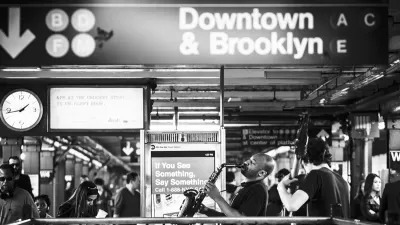In New York's subway, stations are not the only historic parts of the 113-year-old system. Essential communications infrastructure responsible for keeping the trains running belongs in a museum, explaining the cause of many recent delays.

New York's Metropolitan Transportation Authority, the state agency that operates New York's subway, may be ready for open gangway subway cars, but the more pressing question is, how long will it take to replace the subway's aging signal system?
"After a long period of improvement, the system’s reliability has dropped significantly, with delays more than doubling over the last five years, according to a review of data from the Metropolitan Transportation Authority," wrote The New York Times transit reporter, Emma G. Fitzsimmons in February.
A top reason for the delays is aging equipment that "dates back to the 1930s." The signal network, which controls when trains can move down the tracks, lies at the heart of the subway's latest operating woes, is explored by Fitzsimmons in this indepth piece on May 1.
But the rollout of a new signal network is unfolding at a glacial pace even as the subway system is straining under the demands of a booming ridership. Two decades after the agency began its push to upgrade signals, work has been completed on just one line.
New York's signaling equipment is so antiquated that it is "not supported by the rail industry; we are fully self-sufficient and self-sustaining," using their own signal shop, explains the narrator in this MTA video that makes the case for replacing the ancient equipment with modern communications-based train control (CBTC).
"At the current pace, transforming every subway line could take half a century and cost $20 billion," adds Fitzsimmons.
That may be an optimistic forecast, though. A November 2015 post, one of three by Planetizen editor James Brasuell on train delays and lack of modernization plaguing the subway, claims that at "the current pace of installation, the subway system as a whole won’t be converted to CBTC for another 175 years."
Also see the Regional Plan Association video on CBTC and New York's subway system.
Fitzsimmons next transit assignment was across the pond in the world's oldest, yet by New York's standards, also one of the most modern: the London Tube. "It was like being dropped into an alternate universe where people actually like their subway," she reported.
Hat tip to Mark Boshnack.
FULL STORY: Key to Improving Subway Service in New York? Modern Signals

Maui's Vacation Rental Debate Turns Ugly
Verbal attacks, misinformation campaigns and fistfights plague a high-stakes debate to convert thousands of vacation rentals into long-term housing.

Planetizen Federal Action Tracker
A weekly monitor of how Trump’s orders and actions are impacting planners and planning in America.

In Urban Planning, AI Prompting Could be the New Design Thinking
Creativity has long been key to great urban design. What if we see AI as our new creative partner?

King County Supportive Housing Program Offers Hope for Unhoused Residents
The county is taking a ‘Housing First’ approach that prioritizes getting people into housing, then offering wraparound supportive services.

Researchers Use AI to Get Clearer Picture of US Housing
Analysts are using artificial intelligence to supercharge their research by allowing them to comb through data faster. Though these AI tools can be error prone, they save time and housing researchers are optimistic about the future.

Making Shared Micromobility More Inclusive
Cities and shared mobility system operators can do more to include people with disabilities in planning and operations, per a new report.
Urban Design for Planners 1: Software Tools
This six-course series explores essential urban design concepts using open source software and equips planners with the tools they need to participate fully in the urban design process.
Planning for Universal Design
Learn the tools for implementing Universal Design in planning regulations.
planning NEXT
Appalachian Highlands Housing Partners
Mpact (founded as Rail~Volution)
City of Camden Redevelopment Agency
City of Astoria
City of Portland
City of Laramie





























